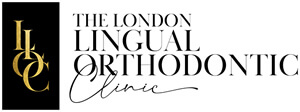I always enjoy hearing about dentists who have shaped history and there is a perfect example of this in the development of facial reconstructive surgery during the First World War. Dentists and dental technicians were instrumental in creating the first centre of excellence for plastic surgery in Sidcup in Kent.
The story begins on the battlefields of France. In 1914, dentists were valued less highly by the British Expeditionary Forces than vets and blacksmiths. So that when General Douglas Haig, Commander of the British Forces, developed toothache, there wasn’t a dentist available to treat him. A French born dental surgeon who had qualified in the United States, Charles Valadier, was sent to the rescue.
By getting Haig out of pain, he made history for the first time, albeit in a small way. But it was in his role as a volunteer for the British Red Cross that he was far more influential. From early on in the war, he was already treating soldiers with dental problems and facial injuries. He was joined by a surgeon called Harold Gillies, later to be identified as the founder of British plastic surgery, and they set about working together to develop facial reconstruction techniques.
So many men were injured in the face – 2000 – that eventually Gillies came back to England so he could operate here, firstly at Aldershot Hospital and then at a new centre which was created in Sidcup, Kent. A large house became the Queen’s Hospital and prefabricated buildings put up in the grounds where the men could live between the many operations they had to endure.
Valadier stayed in France but Gillies was later to pay tribute to the dentist who introduced him to this very specialist area of work: “The credit for establishing the first Plastic and Jaw Unit which so facilitated later progress to plastic surgery must go to the remarkable linguistic talents of the smooth and genial Sir Charles Valadier.â€
And as a footnote, it should be said that at the Queen’s Hospital, which was closed in 1925, both dentists and technicians played a very important role in the rehabilitation of badly injured soldiers.
Photo courtesy of Bonhams













